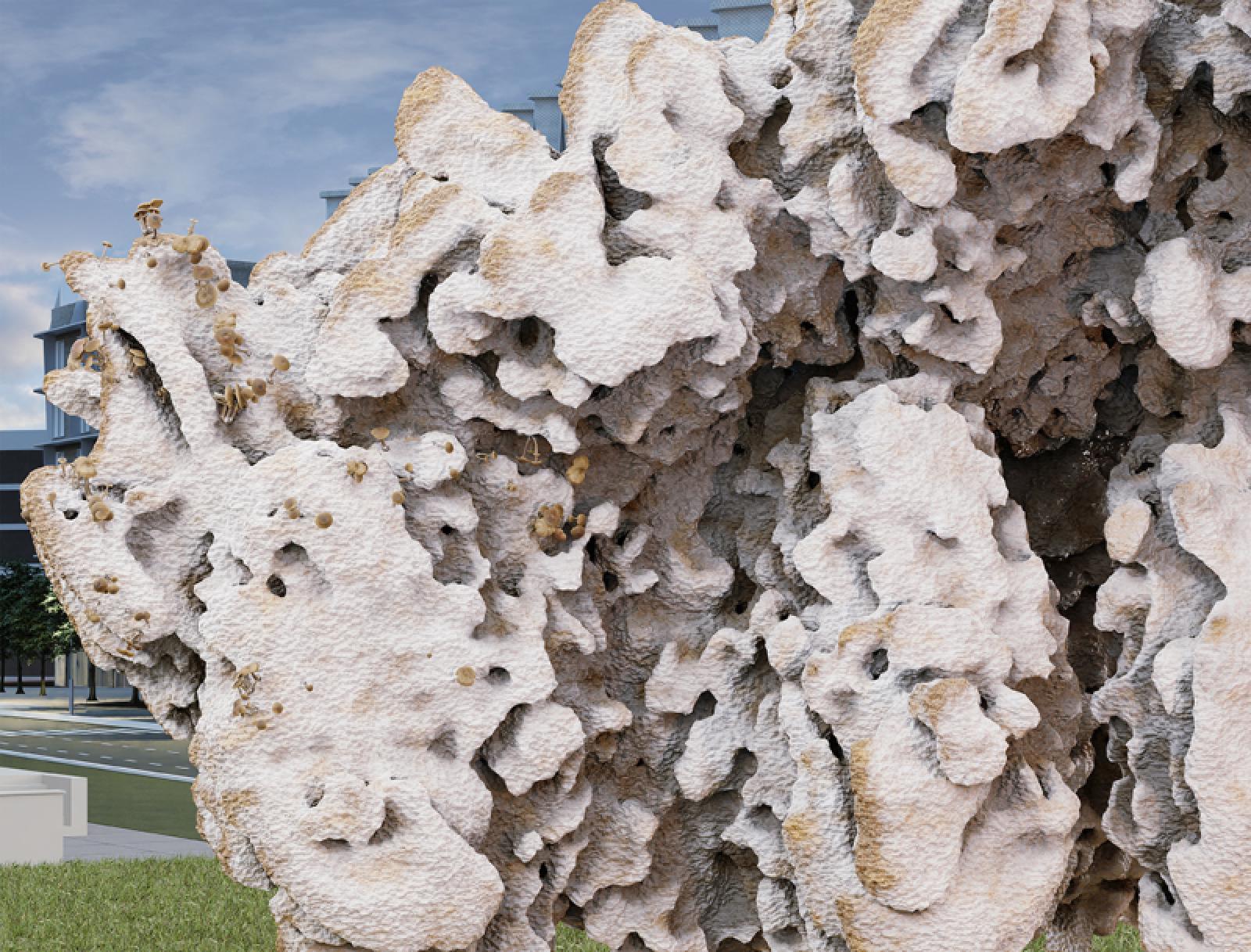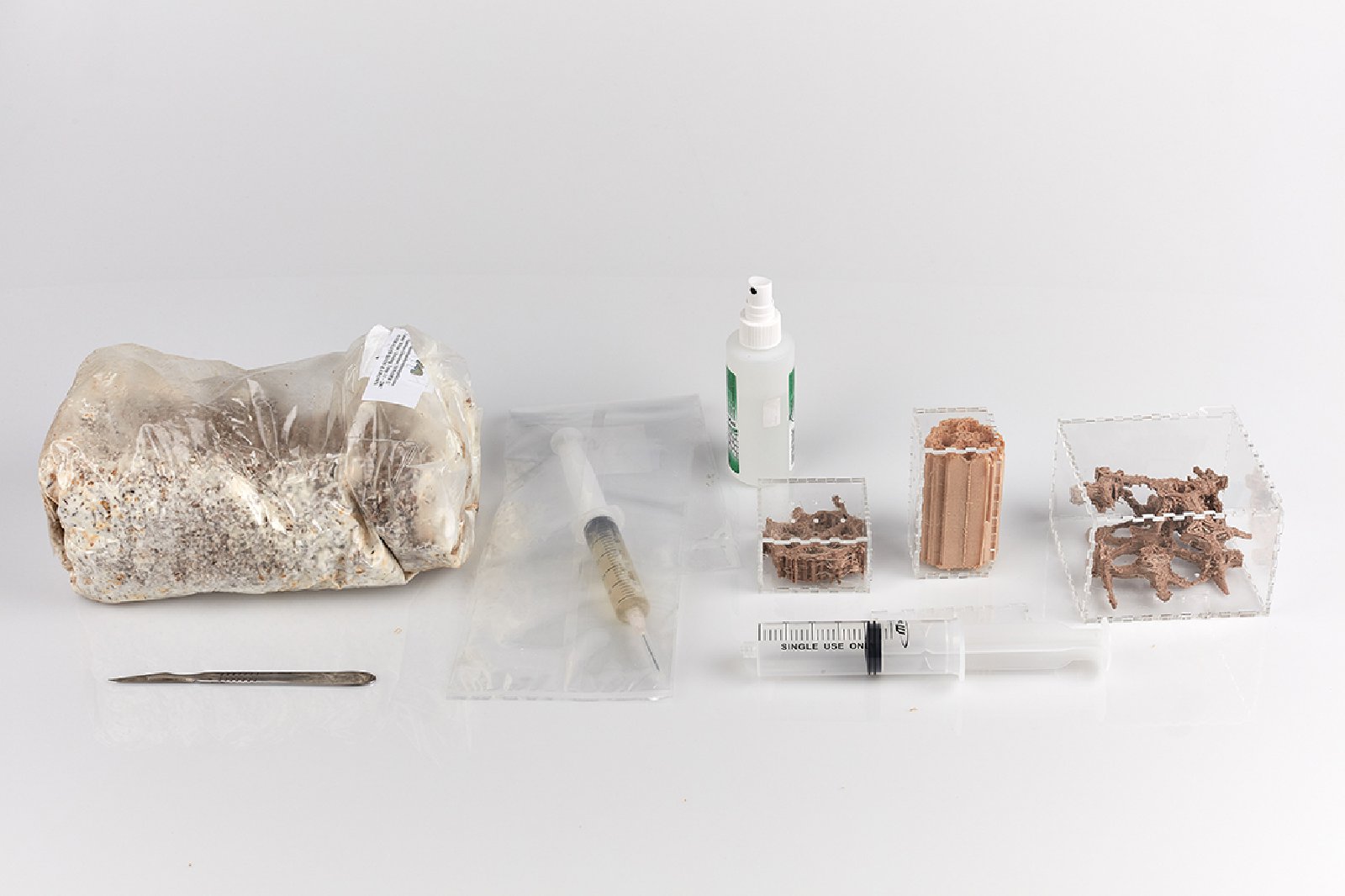The 6th Tallinn Architecture Biennale (TAB 2022) (https://tab.ee) proudly announces the winning proposal for the TAB 2022 Installation Programme Competition “Slowbuilding”. The open two-stage competition challenged emerging architectural talents to design an experimental timber installation in front of the Museum of the Estonian Architecture, in the heart of Tallinn, focusing on the concept of slowness and aligning with TAB 2022’s main theme: “Edible. Or, the Architecture of Metabolism”.
The jury comprised of Roland Snooks (Kokkugia, RMIT – Australia), Kathrin Dörfler (dorfundrust, TU Munich – Germany) and Peeter Pere (Peeter Pere Arhitektid – Estonia), selected Burlasite by Simulaa with Natalie Alima (Australia), from among 119 submissions from around the world. The jury was intrigued by the applicants’ proposal of a temporal installation that is cultivated, incubated and cured over several months, engaging perfectly with the curatorial theme “Slowbuilding”.
Beyond the everyday concerns of maintenance and longevity, the winning team challenges and inverts the prevailing view that a decayed building is an obsolete one – by creating a structure that allows for the passing of time to be expressed. Burlasite utilizes algorithmic processes that enable biological transformations of material growth and decay to rewire its foundations.
Composed of industrial timber waste, the robotically fabricated formwork is inoculated with mushroom fibers that over time, consume and overwrite it with a hardened mycelial structure. This generates a tension between the natural and artificial, heightening the installation’s expression of eroding and emerging form. The project investigates timber as a sculpted, textured and imprecise material, by assigning value to the waste and by-products (off cuts and saw dust) that are commonly discarded.
Waste material from the local timber industry will be harvested and combined with a biodegradable polymer, forming the base form of the installation; which will be shaped into a series of smaller components, produced using a large, custom 3-axis machine assembly. By combining robotically placed biodegradable binder with hand filling, packing and checking processes, Simulaa with Natalie Alima have invented a new approach to large scale building manufacturing that eliminates the need for moulds, generates no waste and is completely biodegradable.
The 3D-printed timber structure is then inoculated with mycelia to consume and take over, slowly replacing it over time, until the sawdust formwork has been consumed, with only the hardened structural mycelia remaining. This is analogous to the process by which bio-scaffolds are utilized in medicine to promote the growth of human tissue with an artificially introduced structure.
Explicitly engaging with metabolism and the life cycles of materials, the pavilion dies as it becomes permanent. The installation will be built from May to September 2022, in the lively pedestrian green area facing the Museum of Estonian Architecture and will open to the public during the TAB 2022 Opening Week on September 7th, 2022.
The structure will remain in place until the next edition of the event in 2024. On the podium stand are second prize winners IHEARTBLOB (UK) with their project Fungible, Non-Fungible. All the projects by Stage II participants will be displayed at the TAB Installation Programme exhibition, and published on the TAB 2022 website and in the catalogue. Source by Tallinn Architecture Biennale and photos Courtesy of MINT LIST.







